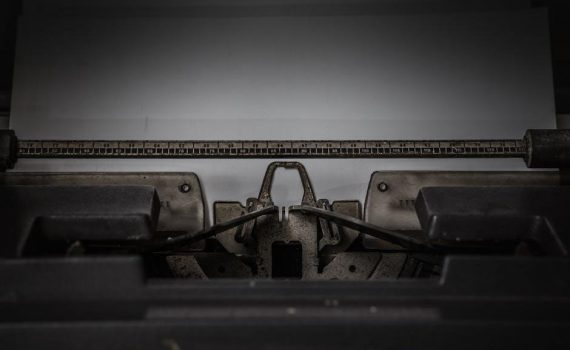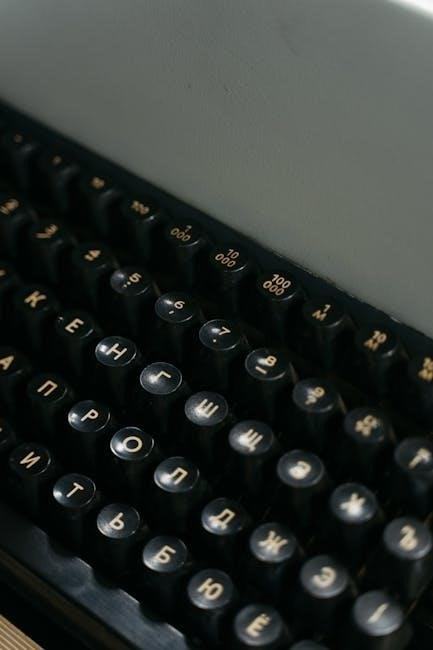miyoo mini plus guide
Category : Guide
Welcome to the versatile world of the Miyoo Mini Plus, a portable powerhouse for retro gaming enthusiasts and casual players alike. This guide serves as your ultimate resource for setting up, customizing, and optimizing your device to unlock its full potential.
1.1 Overview of the Miyoo Mini Plus
The Miyoo Mini Plus is a portable retro gaming handheld designed for enthusiasts and casual players. It combines a sleek design with robust performance, offering a versatile platform for emulating classic consoles. With a high-resolution display and ergonomic build, it delivers an immersive gaming experience. Supporting multiple systems, it caters to a wide range of retro gaming needs. Its user-friendly interface and customizable options make it a standout choice for both newcomers and experienced gamers seeking a reliable portable solution.
1.2 Why Choose the Miyoo Mini Plus?
The Miyoo Mini Plus stands out as a top choice for retro gaming due to its portability, powerful performance, and extensive compatibility with classic consoles. It offers a user-friendly experience, making it accessible to both newcomers and seasoned gamers. With customizable options and a vibrant display, it enhances your gaming sessions. Its ability to support multiple systems and emulators ensures a diverse library of games at your fingertips, making it a versatile and enjoyable handheld for retro gaming enthusiasts.
1.3 Target Audience for the Guide
This guide is tailored for both newcomers and experienced users of the Miyoo Mini Plus. Beginners will find clear setup instructions, while tech-savvy gamers can explore advanced customization and optimization tips. Retro gaming enthusiasts, casual players, and those seeking a portable emulation solution will benefit from the comprehensive coverage of features, troubleshooting, and community support, ensuring everyone can maximize their device’s potential and enjoy a seamless gaming experience.
Where to Buy the Miyoo Mini Plus
The Miyoo Mini Plus is available at reputable retailers like AliExpress, Amazon, KeepRetro, and DroiX. Amazon offers faster shipping, while others provide reliable purchasing options.
2.1 Recommended Retailers
For a reliable purchase, consider retailers like AliExpress, Amazon, KeepRetro, and DroiX. Amazon is ideal for faster shipping, while AliExpress offers competitive pricing. Ensure to check seller ratings and reviews to avoid counterfeit products. These platforms provide secure transactions and genuine devices, making them top choices for acquiring the Miyoo Mini Plus. Always verify product authenticity before finalizing your purchase to ensure a smooth experience with your new handheld console.
2.2 Tips for Purchasing
When purchasing the Miyoo Mini Plus, ensure to buy from reputable sellers to avoid counterfeit devices. Check seller ratings, read reviews, and verify product authenticity. Consider bundle deals that include essential accessories like SD cards or screen protectors. Additionally, look for retailers offering warranty options and reliable customer support. Always check for the latest firmware or OS versions available before finalizing your purchase. This ensures you receive a device ready for optimal performance right out of the box.
Unboxing and First Impressions
Unboxing the Miyoo Mini Plus reveals a sleek, compact design with a high-quality build. The vibrant screen and ergonomic controls immediately impress, offering a premium feel for retro gaming.
3.1 What’s in the Box?
The Miyoo Mini Plus typically comes with the handheld console, a USB-C charging cable, and a quick start guide. Some retailers may include additional accessories like a screen protector or carrying pouch. The packaging is minimal yet practical, ensuring everything needed to get started is included. The device itself feels sturdy, with a sleek design that hints at its retro gaming capabilities. This straightforward unboxing experience sets the stage for a user-friendly setup process.
3.2 Initial Setup and First Boot
After unboxing, charge the Miyoo Mini Plus using the provided USB-C cable. Insert a compatible SD card with OnionOS pre-installed for optimal performance. Power on the device, and follow the on-screen instructions to complete the initial setup. The first boot will guide you through language selection and basic configurations. Ensure your SD card is properly formatted and contains the necessary files for smooth operation. This initial setup lays the foundation for a seamless retro gaming experience.
Setting Up Your Miyoo Mini Plus
Discover how to install OnionOS, add ROMs, and configure essential settings to transform your Miyoo Mini Plus into a retro gaming powerhouse with ease and precision.
4.1 Installing OnionOS
Installing OnionOS on your Miyoo Mini Plus is essential for unlocking its full potential. Start by downloading the latest stable version of OnionOS from a trusted source. Use a reputable SD card, such as Samsung or SanDisk, and format it properly. Extract the OnionOS files and ensure the correct folder structure is maintained. Follow the step-by-step guide to avoid common issues like corrupted files or incorrect folder placement. This process enhances performance, adds more emulators, and provides a smoother gaming experience. Troubleshooting tips are available if you encounter any problems during installation.
4.2 Adding ROMs and BIOS
After installing OnionOS, the next step is to add your ROMs and BIOS files. Organize your ROMs by system in designated folders within the SD card. Ensure BIOS files are placed in the correct directory for proper emulation. Use reputable sources for ROMs and verify their compatibility with the Miyoo Mini Plus. Copy the files to the appropriate locations, and restart your device to access your games. This setup ensures smooth gameplay and proper system emulation across various platforms.
4.3 Configuring Basic Settings
Navigate to the settings menu to configure basic options for optimal performance. Adjust screen brightness and volume to your preference. Customize button mappings to enhance gameplay comfort. Enable or disable features like auto-save and screen dimming. Set up your preferred save state location and configure controller vibration. Ensure your device is updated to the latest firmware for stability. These adjustments will personalize your experience and ensure smooth operation of your Miyoo Mini Plus.
Customizing Your Miyoo Mini Plus
Personalize your Miyoo Mini Plus with themes, button mappings, and screen settings to enhance your gaming experience. Install custom themes for a unique look and feel, adjust button configurations for comfort, and fine-tune display settings for optimal visibility. These customizations allow you to tailor your device to your preferences, making it truly yours.
5.1 Installing Themes
Enhance your Miyoo Mini Plus experience by installing custom themes. Download themes from trusted sources like forums or retro gaming communities. Extract the theme files and place them in the designated themes folder on your device. Restart your handheld to apply the new theme. Themes can customize the UI, icons, and overall aesthetic, allowing for a personalized look. Experiment with different themes to find the one that best matches your style and preferences for a unique gaming experience.
5.2 Custom Button Mapping
Custom button mapping allows you to personalize your Miyoo Mini Plus controls for a more comfortable gaming experience. Access the button mapping feature through the device’s settings menu. Select the emulator or game you wish to customize and adjust the button assignments to suit your preferences. This feature is particularly useful for optimizing gameplay or accommodating different hand sizes. Save your configurations to enjoy a tailored control setup that enhances your retro gaming sessions.
5.3 Adjusting Screen Settings
The Miyoo Mini Plus features an LCD screen with adjustable settings to enhance your gaming experience. You can modify brightness, contrast, and saturation to optimize visibility. Additionally, the notch can be enabled or disabled based on your preference. Access these options through the system menu under “Display Settings.” Adjusting these settings not only improves screen clarity but also helps conserve battery life, ensuring longer play sessions on the go.
Optimizing Performance
Optimizing your Miyoo Mini Plus involves installing the right OS, like OnionOS, and tweaking emulator settings for smooth gameplay. Regular firmware updates ensure peak performance and stability.
6.1 Emulator Settings for Smooth Gameplay
For smooth gameplay on the Miyoo Mini Plus, optimize emulator settings by enabling frameskipping and VSync. Adjust audio latency and resolution scaling to enhance performance. Install OnionOS for better compatibility with various retro consoles like SNES, Genesis, and GBA. Fine-tune settings for each emulator to ensure lag-free gaming. Regularly update emulators and firmware to maintain peak performance. Experiment with different configurations to find the perfect balance between visuals and responsiveness for your favorite games.
6.2 Updating Firmware
Regular firmware updates are crucial for maintaining optimal performance on your Miyoo Mini Plus. Install the latest OnionOS version to access new features and bug fixes. Use a reputable SD card, format it properly, and follow the official update instructions carefully. Ensure your device is fully charged before starting the process. Updating firmware enhances stability, improves compatibility with retro games, and unlocks advanced functionalities. Always verify the source of the firmware to avoid potential issues during the update process.
Accessories for the Miyoo Mini Plus
Elevate your gaming experience with essential accessories like high-quality SD cards, protective cases, and screen protectors. These enhance portability, safety, and performance for optimal retro gaming enjoyment.
7.1 Must-Have Accessories
Essential accessories for the Miyoo Mini Plus include a high-quality SD card for storing games, a protective case for safe transport, and a screen protector to prevent scratches. Additionally, a USB-C cable ensures reliable charging, while a comfortable grip enhances handheld gaming sessions. These accessories not only protect your device but also elevate your gaming experience, making them indispensable for any Miyoo Mini Plus owner looking to maximize convenience and enjoyment.
7.2 Recommended SD Cards
For optimal performance, use a high-speed SD card from reputable brands like Samsung or SanDisk. These cards offer fast read/write speeds, ensuring smooth gameplay and quick loading times. A 128GB or 256GB card is ideal for storing a large library of games. Always choose cards with a minimum U3 or V30 rating to meet the Miyoo Mini Plus’s demands. Avoid low-quality cards to prevent performance issues and ensure a seamless gaming experience.
Advanced Tips and Tricks
Explore advanced features like RetroArch for enhanced emulation, enable cheat codes for a gaming edge, and master multitasking for seamless app switching on your Miyoo Mini Plus.
8.1 Using RetroArch
RetroArch is a powerful emulation framework that enhances your Miyoo Mini Plus experience. It allows you to play games from multiple systems by installing cores for each platform. With features like shader support, save states, and customizable controls, RetroArch offers flexibility and improved performance. To get started, download cores from the RetroArch repository, configure input settings, and explore advanced options like overlay displays. For troubleshooting, refer to the official RetroArch documentation or community forums for detailed guides and solutions.
8.2 Enabling Cheat Codes
To enhance your gaming experience, enable cheat codes on the Miyoo Mini Plus using RetroArch. Download cheat code files (.cht) from online databases and place them in the cheats folder. In RetroArch, navigate to Settings > Cheats > Enable Cheat Codes and load the desired cheat file. Toggle cheats on or off during gameplay using the designated hotkey. Note that some games may require specific BIOS files for cheats to function properly. Experiment with different codes to unlock hidden features or gain advantages in your favorite games.
8.3 Multitasking and Background Tasks
The Miyoo Mini Plus supports multitasking, allowing you to switch between apps or games seamlessly. Press the Home button to access the task manager and view open applications. Background tasks like file transfers or updates can run while gaming, though performance may vary. For optimal gameplay, close unused apps to free up resources. This feature enhances productivity and convenience, making the Miyoo Mini Plus a versatile retro gaming device for both casual and advanced users.
Comparing the Miyoo Mini Plus to Other Handhelds
The Miyoo Mini Plus stands out for its balance of power, portability, and affordability, making it a strong contender against devices like the RG35XX and other retro handhelds.
9.1 vs. RG35XX
The Miyoo Mini Plus and RG35XX are both popular retro handhelds, but they cater to different needs. The Miyoo Mini Plus excels in portability and affordability, offering a lightweight design and ease of use. In contrast, the RG35XX often features a larger screen and more buttons, appealing to those who prioritize gameplay visibility and complexity. While the Miyoo Mini Plus is ideal for casual gaming on the go, the RG35XX may suit enthusiasts seeking a more immersive experience with additional controls.
9.2 vs. Other Retro Handhelds
The Miyoo Mini Plus stands out among other retro handhelds for its balance of portability, performance, and affordability. While devices like the RG35XX offer larger screens, the Miyoo Mini Plus excels in ease of use and battery life. Its lightweight design makes it ideal for on-the-go gaming, while its user-friendly interface appeals to both casual and experienced gamers. Compared to other retro handhelds, the Miyoo Mini Plus delivers a seamless retro gaming experience without compromising on convenience or cost.
Troubleshooting Common Issues
Address common problems like battery drain or software glitches with practical solutions. This section helps you resolve issues quickly, ensuring smooth performance and optimal gaming experience.
10.1 Battery Life Problems
Experiencing short battery life? Check screen brightness, disable unnecessary features, and ensure proper firmware updates. Adjust settings like backlight timing and Wi-Fi usage to conserve power. Monitor background tasks and close unused apps. Avoid overcharging, as it can degrade battery health. Use original chargers for optimal charging. If issues persist, reset device settings or reinstall OnionOS. Regularly update firmware for improved battery optimization. Explore further tips in our guide for extended playtime and better performance.
10.2 Software Update Failures
Encountering software update issues? Ensure stable internet connectivity and sufficient storage space. Use original firmware or trusted sources like OnionOS. Avoid interrupting updates, as this may cause corruption. If updates fail, restart your device, clear cache, and retry. Check for compatibility with your Miyoo Mini Plus model. If problems persist, reinstall the operating system or seek assistance from official support channels or community forums for detailed troubleshooting guides and solutions.
Community and Support
Engage with online forums, official support channels, and community groups for troubleshooting, updates, and tips. These resources offer valuable assistance and foster a connected user experience.
11.1 Online Forums and Groups
Online forums and groups are vibrant hubs for Miyoo Mini Plus users to connect, share knowledge, and solve issues. Platforms like Reddit, Facebook groups, and Discord servers host active discussions. Users exchange tips, troubleshoot problems, and showcase custom setups. These communities are invaluable for real-time support and fostering connections among enthusiasts. Participating in these forums can enhance your experience and help you stay updated on the latest developments and optimizations for your device.
11.2 Official Support Channels
The Miyoo Mini Plus manufacturer provides official support through their website, including a dedicated support email for inquiries. Official forums and social media groups are also available, offering direct assistance and updates. These channels are essential for troubleshooting and accessing verified firmware updates. Users can rely on these resources for reliable guidance and official announcements, ensuring a smooth experience with their device.
Conclusion
The Miyoo Mini Plus is a powerful retro gaming device with endless customization options. This guide has equipped you with the knowledge to maximize its potential and explore further.
12.1 Final Thoughts
The Miyoo Mini Plus is a standout retro handheld, offering portability, power, and endless customization. Its versatility caters to both casual gamers and enthusiasts. With this guide, you’ve gained the tools to unlock its full potential, from initial setup to advanced tweaks. The thriving community and constant updates ensure it remains a top choice. Embrace the nostalgia and innovation it offers, and enjoy your journey through the world of retro gaming with the Miyoo Mini Plus.
12.2 Encouragement to Explore Further
Now that you’ve set up your Miyoo Mini Plus, it’s time to dive deeper! Explore the vibrant community for inspiration, tips, and resources. Experiment with custom themes, button mappings, and performance tweaks to tailor your experience. Stay updated with firmware releases and join forums to share discoveries. Remember, this guide is just the starting point—there’s always more to uncover. Keep exploring, and enjoy the endless possibilities your Miyoo Mini Plus has to offer!



















